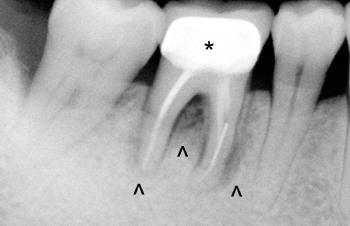
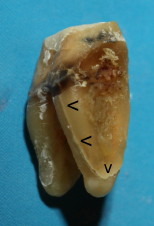
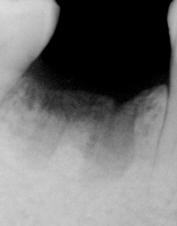
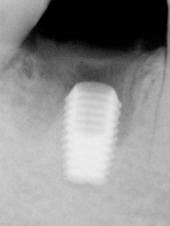
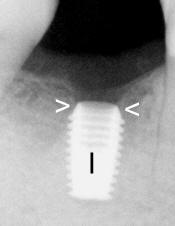
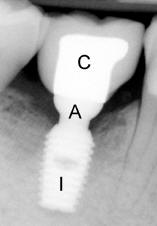
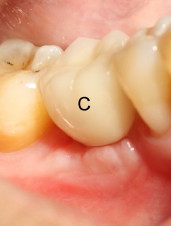
 |
 |
 |
|
| Fig.1 | Fig.2 | Fig.3 | |
 |
 |
 |
 |
| Fig.4 | Fig.5 | Fig.6 | Fig.7 |
Dental Education Lecture: Immediate Implant
Sometimes my patients ask whether we can place an implant immediately after extraction. The answer is that it is doable. It saves time, but it is a little bit more risky.
Because when we need to take out a tooth, it is usually in bad shape with a lot of infection. For example, Mrs. Hu's molar (Fig.1 *) has severe root re-infection (arrowheads), several years after root canal. When we take out the tooth, the root is found to have cracks (arrowheads in Fig.2) with lots of pus. The implant does not survive well in an infected area.
Usually we remove the bad tooth first, let the wound heal (infection clears by itself) (Fig.3), and place an implant about 2-4 months later (Fig.4) without too much fear of failure. Another 2-4 months later bone density around the implant (I) increases and the bone binds to the implant so that the implant is very stable now (Fig.5 arrowheads, as compared to Fig.4). Then we place an abutment (A in Fig.6) and a new crown (C in Fig.6,7). Everything goes on smoothly and safely for this patient.
If we were in a hurry to place an implant in an infected area, the bone might not heal on the implant well. If we are lucky, we save one surgery and several months. If not, we lose an implant. Then we need two extra surgeries to take out the failed implant and place one again later. The time wasted also doubles.
Xin Wei, DDS, PhD, MS 1st edition 05/30/2010, last revision 09/28/2012